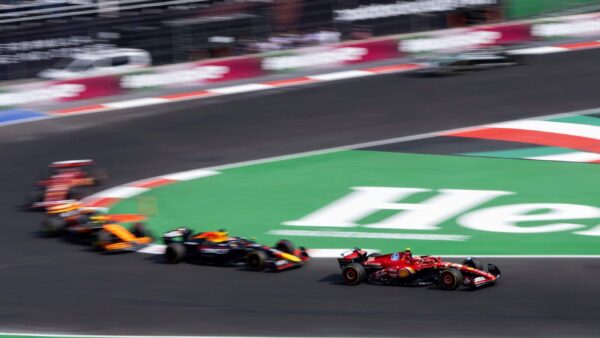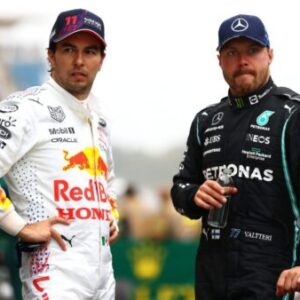Overtaking in Formula 1 is far from a ‘free-for-all’, with strict rules in place on how drivers can attack, pass, and defend, depending on the type of corner. Recent events of the F1 2024 season have brought into the spotlight the rules that drivers must obey while racing against their rivals, with the FIA outlining driving guidelines and what’s acceptable in battle. F1 introduces Driving Guidelines in 2022Given the highly-prescribed nature of most of the regulations in Formula 1, it’s somewhat surprising that the rules regarding overtaking were never made particularly clear in the past.

While there was a general sense of ‘the right way’ to overtake, there was little clarity on what was ‘the wrong way’ and that has led to more contentious moves and incidents in recent years as the sport’s popularity surged. As part of the root-and-branch overhaul of the governance of F1, and ensuring that as many scenarios in the sport are legislated for and worded to cover as many areas as possible, the FIA introduced Driving Standard Guidelines in 2022 – the rules to which drivers must adhere to while on track and in battle. These were originally published early in the 2022 season and outline what is and isn’t permitted in wheel-to-wheel battles.
It was published “in response to a request from F1 drivers to confirm the factors that may be taken into account by the FIA stewards when decisions are made in relation to certain repeated infringements that occur in the course of a season”. These Guidelines were updated for the F1 2024 season and, below, we’ve detailed the rules that are currently in place for drivers overtaking in Formula 1 – these rules are likely to change over the coming months, following recent meetings of the Grand Prix Driver’s Association with the FIA after contentious defending incidents from reigning World Champion Max Verstappen. The latest Driving Guidelines, in whatever form is agreed, are set to become part of the International Sporting Code in F1 2025 and will be accessible to read via the FIA’s published rulebooks.
It’s important to note that the Guidelines are merely that – they are intended to make clear to the drivers how the stewards judge incidents on track but are discretionary in nature as the FIA’s Sporting Regulations, International Sporting Code, and its relevant Appendixes, supersede them. For example, the physical context of an incident must be taken into account, such as whether drivers can be judged to have reasonably seen or anticipated a move, divebomb incidents, if the corner’s physical layout contributed to an incident, if understeer or oversteer played a role in the outcome, etc. As such, the stewards’ decisions must be made pursuant to the relevant regulations, with the Guidelines helping in that process.
Overtaking on the inside of a cornerPut simply, this means that the attacking driver has managed to get their car into a position where they are on the side of the track where the defending driver needs to turn, ie. alongside on the right heading into a right-hander, or alongside on the left into a left-hander. Overtaking on the inside of a corner is, by far, the most common way to overtake, given the lack of defence that the overtakee has once an attacking car has taken this position.
But, at what point does the ‘attack’ become an ‘overtake’? In order to be entitled to room from the defending car, the attacker is expected to have its front axle at least alongside the mirror of the defender by the apex of the corner. It must be driven safely through the entry, apex, and exit without forcing the defending car off the track at the exit.
The attacker is expected to make the corner within track limits, and must leave width for the defender all the way through the exit of the corner. Overtaking on the outside of a cornerThis is a less common type of overtake, given that a driver usually needs to have a significant pace or grip advantage to make this work, as well as some cooperation from the driver being overtaken. This is due to the overtaking driver having to go ‘the long way around’, taking a less than optimal line, while the defending driver’s trade-off is having their apex/exit speed compromised.
In order for the attacking driver to be entitled to space through the corner, including the exit, while attempting to pass around the outside, the attacker must have their front axle at least alongside the front axle of the defending car at the apex of the corner. If the defending car is sufficiently far ahead at the apex, ie. half a car length, the attacking driver is not entitled to be given space through the rest of the corner, including the exit.
The attacker must be able to go through the corner, including the exit, within track limits. More on the FIA and F1’s governance👉 Explained: F1’s track limits rules and how the FIA enforces them👉 F1’s penalty system explained: How does a driver pick up a penalty from the FIA? FIA provides further clarity on tactics in overtaking battlesThe same rules will apply throughout any corner type, such as chicanes and esses, meaning drivers could switch from the outside position to an inside position very quickly – the rules for each type will change for each corner the drivers negotiate.
However, the priority is on the first corner element – the attacking driver must follow the rules for the first corner, or won’t be given the benefit at the second. Should either driver run wide into the run-off area, maintaining racing speeds is not acceptable and, while rejoining, must not force cars on track to have to change speed or their line in order to accommodate them. Should a driver leave the track, drivers must rejoin safely and must not gain any lasting advantage.
Should an advantage be gained by going off-track, the driver who gained the advantage will be given a short opportunity to give back this advantage – this is at the discretion of the Race Director. For cars defending against an attacker, leaving the track or cutting a chicane while rejoining in the same position can be considered as having gained a lasting advantage. Therefore, this position should be given to the attacker – it will be up to the stewards to decide whether or not the defending driver was defending their position at the time, triggering this rule, or has simply made an error by themselves while driving in front of another car.
Defending drivers are also not permitted to change direction more than once along a straight. If a driver moves to defend their position by moving off the racing line, the move back towards the racing line is expected to leave at least one car’s width between the edge of their car and the edge of the track on corner approach. Once the deceleration phase has commenced, ie.
when the defending driver hits the brakes, there must be no change of direction except to follow the racing line. Following this, crowding a car beyond the edge of the track is prohibited. Read Next: Explained: What is ‘parc fermé’ and how does the FIA enforce it?





